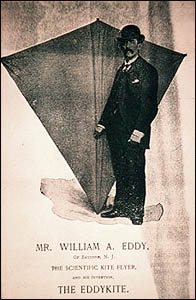Malay kite facts for kids
The Malay kite is a special type of kite that doesn't need a tail to fly! People in the Far East (like parts of Asia) have been flying these kites for hundreds of years for fun. The Western world first heard about them in a New York City newspaper article in October 1894. This article talked about a professor who used several of these tailless, diamond-shaped kites, calling them "Malay kites." Even before this, a similar tailless kite, sometimes called a "Holland" kite, was described in a book called The American Boy's Handy Book around 1882.
How the Malay Kite is Designed
The Malay kite looks a lot like the popular Eddy kite. Its design uses two flexible sticks that cross each other at a right angle. These sticks form a diamond or lozenge shape. The stick that goes across (horizontal) should be a little longer than the one that goes up and down (vertical).
Once the sticks are tied together, a string or cord is pulled tight around the diamond shape. Then, the whole frame is covered with a light material, like paper. When built correctly, this design lets the kite fly very high, even without a tail!
The Eddy Kite: A Famous Inspiration
The diamond-bowed design of the Malay kite inspired other famous kites. One of the most well-known is the "Eddy" kite. William Abner Eddy from Bayonne, New Jersey, created this kite.
He designed the "Eddy" model about four years after the Malay kite became known in the West in 1894. He got a patent for his "Kite" design on March 27, 1900. Today, the "Eddy" kite is one of the most common and popular kite designs you'll see flying in the sky.


